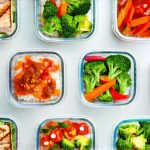Navigating life with bladder or prostate concerns often means adjusting daily habits – including how we approach cooking and eating. Many individuals find themselves needing to modify their diets to manage symptoms like urgency, frequency, or discomfort. This doesn’t have to mean restrictive, bland meals! In fact, a thoughtful approach to food preparation can be empowering, allowing you to enjoy delicious, satisfying dishes while supporting your overall well-being. The key is low-stress cooking – techniques and recipes that minimize ingredients known to potentially aggravate conditions, reduce prep time when energy levels are low, and prioritize simple, nourishing foods.
This article will explore how to adapt your kitchen routines for bladder and prostate health without sacrificing flavor or enjoyment. We’ll focus on practical strategies, from ingredient choices to cooking methods, aiming to create a more comfortable and confident relationship with food. The goal isn’t about eliminating entire food groups but rather making informed decisions that support both physical health and mental peace of mind. It is essential to consult with your healthcare provider or a registered dietitian for personalized dietary recommendations tailored to your specific needs and medical history.
Dietary Considerations for Bladder & Prostate Wellness
Many individuals experience symptom flare-ups triggered by certain foods and beverages. While sensitivities vary greatly, some common culprits include caffeine, alcohol, artificial sweeteners, spicy foods, acidic fruits (citrus, tomatoes), and carbonated drinks. These can irritate the bladder lining or exacerbate prostate inflammation in susceptible individuals. However, it’s important to remember that individual tolerance is key. What bothers one person might not affect another. Keeping a food diary to track symptoms after meals can be incredibly helpful in identifying personal triggers.
The focus shifts from deprivation to mindful substitution and moderation. For example, instead of completely eliminating fruits, you might choose less acidic options like pears or blueberries. Rather than cutting out all spices, you could explore milder herbs and seasonings – learning about supporting spices can be particularly helpful. A cornerstone of bladder and prostate-friendly eating is hydration – drinking plenty of water throughout the day helps dilute urine and reduce irritation. However, timing matters too; avoiding large fluid intakes before bedtime can minimize nighttime trips to the bathroom.
Ultimately, a sustainable dietary approach isn’t about strict rules but about finding what works best for your body, allowing you to enjoy food without fear or discomfort. It’s also important to incorporate foods known to support prostate health – such as those rich in lycopene (tomatoes, watermelon) and selenium (Brazil nuts, mushrooms) – while respecting your individual tolerance levels.
Low-Stress Cooking Techniques
Low-stress cooking isn’t just about simplifying recipes; it’s a mindset shift. It embraces efficiency, minimizes effort, and prioritizes nourishing foods over complex culinary creations. One of the most effective techniques is batch cooking. Spending a few hours on the weekend preparing staples like cooked grains, roasted vegetables, or protein sources (chicken breast, fish) provides building blocks for quick weeknight meals. This reduces decision fatigue and ensures healthy options are readily available when energy is low.
Another vital technique involves leveraging convenience foods strategically – pre-cut vegetables, frozen fruits and vegetables, canned beans (rinsed thoroughly). These can significantly reduce prep time without compromising nutritional value. Slow cooking and one-pot meals are also incredibly helpful, requiring minimal active cooking time and maximizing flavor development with less effort. For inspiration, explore easy crockpot recipes designed for prostate health. Finally, embracing simple seasonings – herbs, spices, garlic, onion – allows you to create flavorful dishes without relying on potentially irritating ingredients like excessive salt or spicy peppers.
Prioritizing ease and efficiency is crucial, especially when managing chronic health conditions. The goal isn’t to become a gourmet chef; it’s to create a sustainable eating pattern that supports your well-being, minimizes stress, and allows you to enjoy food without anxiety.
Simplifying Meal Prep
Meal prepping doesn’t have to be an overwhelming task. Start small with one or two meals per week, gradually increasing as you become more comfortable.
- Plan ahead: Choose recipes that utilize similar ingredients to minimize waste and streamline preparation.
- Create a shopping list: Based on your meal plan, ensuring you have everything needed before you start cooking.
- Prep ingredients in advance: Wash, chop, and portion vegetables, fruits, and proteins. Store them in airtight containers for easy access during the week.
Consider using pre-portioned containers to make assembling meals even faster. For example, divide cooked quinoa into individual servings with roasted vegetables and a protein source for grab-and-go lunches or dinners. Don’t be afraid to utilize leftovers creatively – transform roasted chicken into chicken salad sandwiches or add leftover vegetables to soups or stews.
One-Pot Wonders
One-pot meals are the epitome of low-stress cooking, minimizing both prep time and cleanup. Think beyond traditional soups and stews!
- Sheet pan dinners: Toss vegetables (broccoli, carrots, sweet potatoes) and protein (chicken thighs, salmon) with olive oil and herbs, then roast on a single sheet pan for an easy, healthy meal.
- Skillet meals: Sauté vegetables and protein in a skillet, add a sauce or broth, and simmer until cooked through.
- Instant Pot/Slow Cooker Recipes: These appliances are game-changers for busy individuals. Simply combine ingredients, set the timer, and let the appliance do the work.
These methods require minimal active cooking time, allowing you to focus on other tasks while your meal cooks itself. They also often result in flavorful dishes with less effort. Remember to adjust seasonings based on individual tolerance levels.
Embracing Frozen Foods & Convenience Options
Frozen foods are a fantastic way to reduce prep time and minimize food waste. Don’t underestimate the power of frozen vegetables, fruits, and even proteins. These options are often just as nutritious as fresh produce and can be incredibly convenient.
- Choose plain frozen vegetables without added sauces or seasonings to avoid potential irritants.
- Consider pre-cut vegetables – while slightly more expensive, they save valuable time and energy.
- Canned beans (rinsed thoroughly) are a great source of protein and fiber but may need some preparation.
When using convenience options, read labels carefully to avoid ingredients that might trigger symptoms. Look for low-sodium options and be mindful of added sugars or artificial sweeteners. The goal is to simplify your cooking routine without sacrificing nutritional value or flavor. A focus on hydration is also key; consider how hydration-aware cooking can support prostate comfort.
To further support a healthy lifestyle, incorporating practices like those found in routine building for harmony can be incredibly beneficial when managing bladder and prostate health. Remember that understanding your individual needs is crucial, so consider exploring ways to improve bladder health through diet and habits.





















